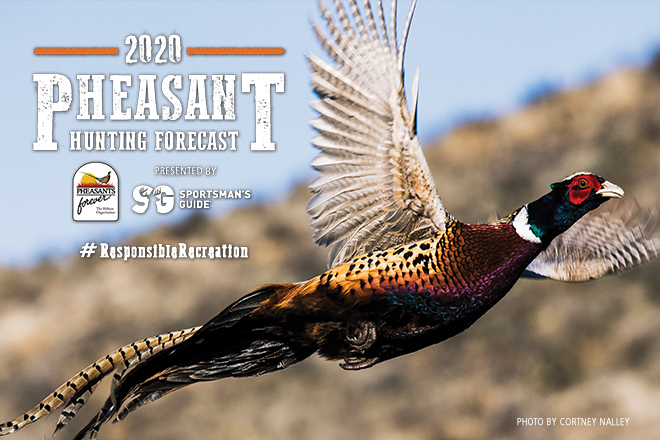
Encouraging reports and favorable weather makes for an exciting fall ahead in Oregon
By Andy Fondrick, Digital Marketing Specialist at Pheasants Forever
Editor’s Note: If you’re reading this forecast, you must hunt pheasants. If you hunt pheasants and don’t belong to Pheasants Forever or you need to renew, it’s time. Since inception, PF has impacted over 19 million acres of habitat, and created over 200,000 acres of permanently public wild places to hunt and recreate. Upland habitat, public lands and hunting heritage need you. Join, renew or extend and for a limited time get a sweet PF Field Hoodie to boot!
While pheasants didn’t go without challenges over the past year in Oregon, it was a pretty good year overall. Decent weather conditions and carryover cover plants from 2019 have provided some positive results for pheasant broods and the fall ahead. Initial reports show that longtails should be trending in the right direction heading into the hunting season.
WEATHER AND CONDITIONS
A relatively mild should have allowed for a high survival rate, according to Mikal Cline, upland game bird coordinator for the Oregon Department of Fish and Wildlife.
“There were some unusually long and cold precipitation events in eastern Oregon this spring,” says Cline, “but this seems to have missed the majority of our pheasant strongholds across the northern counties of the Columbia Basin. The Malheur County flocks were likely somewhat impacted at hatch. Summer was quite dry, though there was an abundance of arthropods that should have benefited young pheasant broods.”
Luckily, the recent forest fires haven’t affected the state’s core pheasant areas, but Cline does recommend checking on closures and air quality before hitting the field as fire conditions can change rapidly.
HABITAT, BROODS AND COUNTS
Dry conditions did have an impact on pheasant habitat and cover over the summer, but a strong 2019 helped to safeguard some returning cover crops.
“Upland habitat is fairly dry and desiccated going fall,” says Cline. “There was a decent carryover in cover after a wet year in 2019, so despite the dry conditions, there is cover to be found.”
This carryover cover may have proved critical to the survival of broods this summer, because all indications are that pheasants are heading into the fall in strong numbers.
“There appears to be a nice improvement in pheasant flocks from 2019, with more birds detected on routes, and more chicks per hen,” Cline says.
According to Cline, some eastern Oregon districts conduct summer production surveys. The Umatilla and Heppner Districts turned in the best counts, followed by the Mid-Columbia and Malheur Districts.
Click here to view Oregon’s the full forecast results.
TOP SPOTS
With Oregon pheasant numbers on the rise, Cline has a few hot spots she would recommend checking out this fall.
“The Heppner area offers the best combination of hunter access and pheasant numbers,” she says. “Sherman County is also a good bet, with the best pheasant numbers in the Mid-Columbia district and numerous landowners enrolled in the Upland Cooperative Access Program. Access is more difficult in the other pheasant strongholds south of Pendleton (Umatilla County), but check out the pheasant hunting opportunities on the Mid-Columbia River complex of National Wildlife Refuges.”
INSIDER TIP
“Birds will gather on denser, more permanent cover once crops are harvested,” says Cline. “This can include emergent wetland edges, fencerows, irrigation ditches, and CRP fields. Pheasants will be tied to available water, so don’t stray too far from wetlands, creeks, or ditches.”
You can also utilize Oregon’s access programs to find pheasants on private land in the Columbia Basin with their
online access map.